New SRAM Red AXS groupset might be the 'lightest electronic, ever', but we spent 1,690km on it, and this is what we really thought
SRAM finally releases its new Red AXS groupset, with improved brakes and impressive weight savings
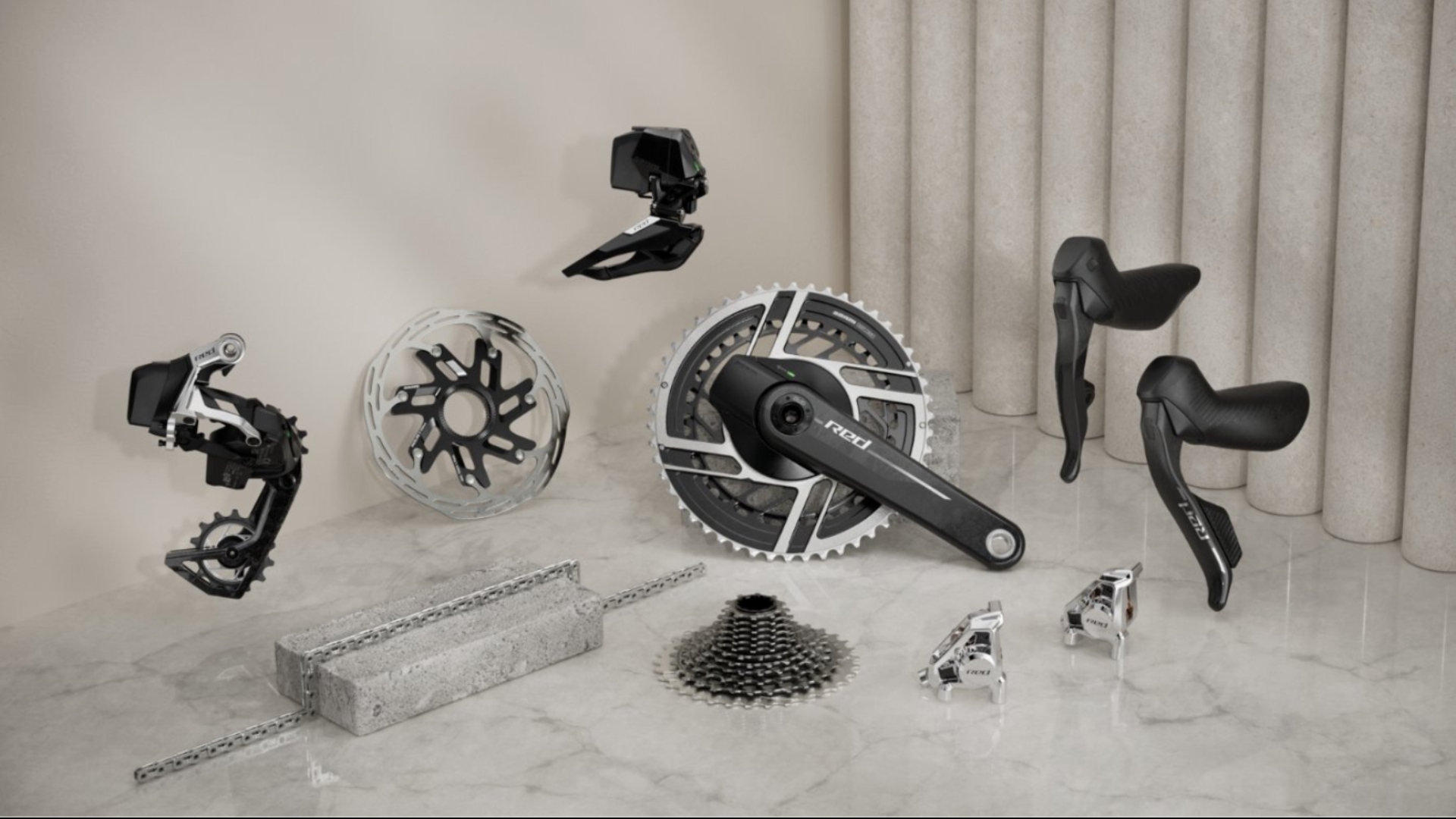

The next generation of SRAM Red AXS is finally here - after months of rumour and speculation.
The new groupset, which broke cover in full at the Tour de Romandie three weeks ago, claims much-needed improved braking performance, front derailleur shifting, and a new aesthetic. At just 2496g, it also overtakes Dura-Ace R92070 as the lightest disc brake road bike groupset.
I have been riding the new groupset for the last six weeks, so with hundreds of kilometers on the new cogs, I feel well-placed to answer two important questions. Has SRAM fixed the issues of old, and has it finally surpassed Shimano?
Well, SRAM has drastically improved on key points, but as a package, I'm not sure it quite usurps Shimano - something I've discussed in even more detail in a direct head to head between the new SRAM Red AXS and Shimano Dura-Ace Di2.
Here's everything you need to know about the new SRAM Red AXS groupset, and riding impressions from myself - after 1,259km - and our North American editor Anne-Marije Rook after 450km.
New SRAM Red AXS
The most striking part of the new SRAM Red AXS groupset is the total aesthetic and ergonomic redesign of the shifters, which is down, in no small part, to the repositioning of the hydraulic brake master cylinder.
SRAM’s outgoing groupset featured a bulbous hood design that was, well, polarising to say the least (guess which side of the fence I was on), with many pros such as Elisa Balsamo, and Jonas Vingegaard even opting for Frankenbike Rival/Red shifters that were smaller in diameter.
The reason for the old shape, in part, was because the master cylinder sat vertically in the top of the lever hood. This has been moved down within the body of the shifter, making a massive difference to both comfort and ergonomics. It also enables the brake lever to pivot closer to the top of the shifter.
The shifters now feature auxiliary buttons just above where your thumbs sit, which can be programmed to shift or otherwise through the SRAM AXS app. Use of the buttons doesn't come quite as naturally as the Dura-Ace hood buttons, with the placement being slightly beyond your thumb. However, this does make accidental gear shifts less likely, and they are very tactile to use.
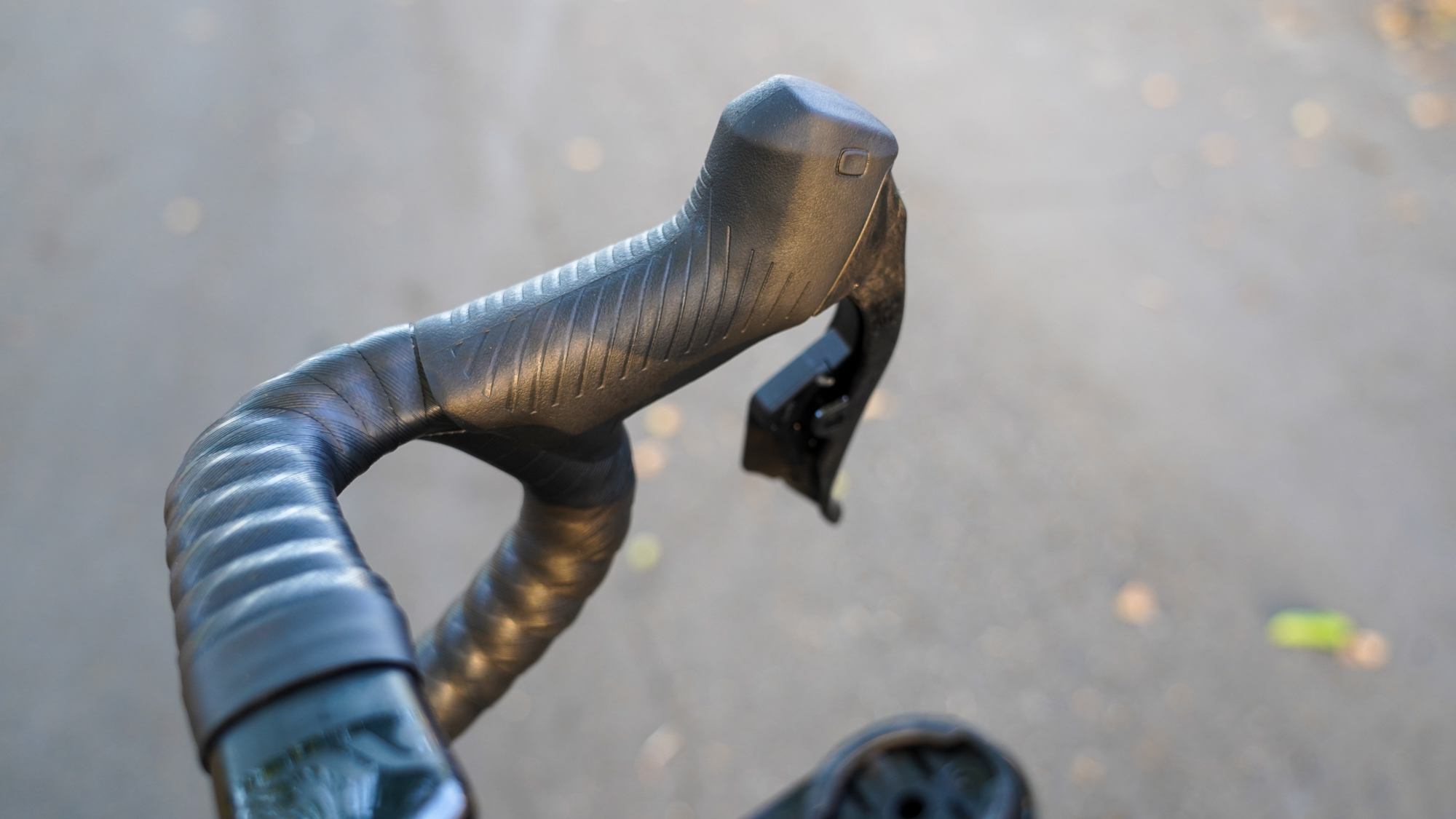
The new SRAM Red AXS shifters have seen a total re-design
The hood angle has been revised too, so when the shifter is set in a vertical position, your grip is angled 16 degrees up from horizontal. This, SRAM says, puts your hand in a more neutral position - and I can confirm, comfort is much improved.
Shimano's hoods tilt in, SRAM's new brake levers flare out. In order to accommodate increasingly common flared handlebars, there is around 10mm of flare from hood to drop on the brake levers, which certainly feels more comfortable.
SRAM is claiming the redesign makes for 80% less effort when braking on the hoods, and 33% less effort in the drops than the outgoing groupset. While I think putting a number on this feels slightly cheesy, I wholeheartedly agree!
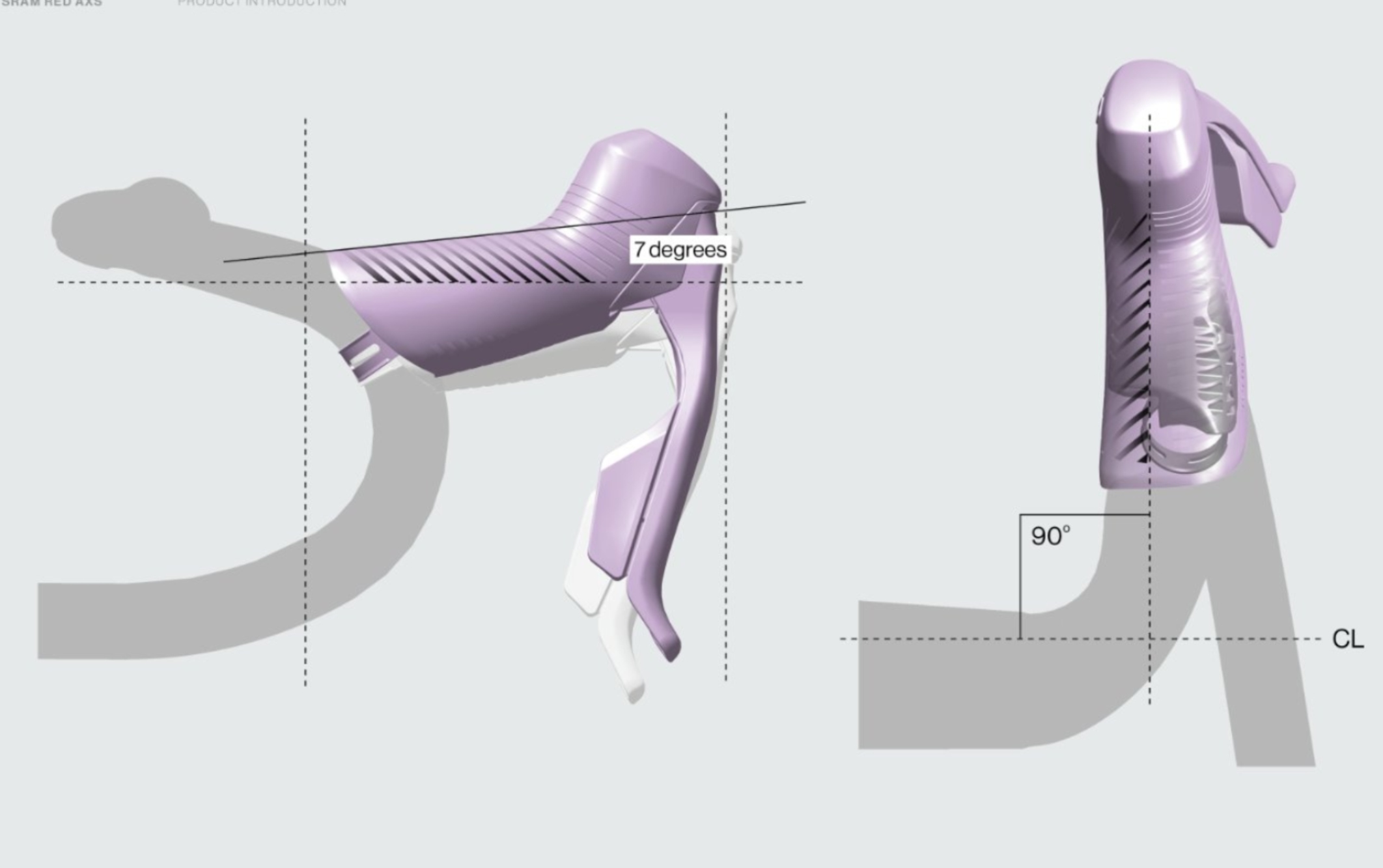
A redesigned hood angle puts your hand in a more neutral position, increasing comfort
The calipers are now a two-piece, bolted-together alloy affair, which has enabled SRAM to save 90 grams from the brake system. SRAM's product managers told me that they are fully serviceable, and that seals will be made available.
SRAM has also moved the pistons further up in the caliper housing, which it claims allows force to be applied nearer the edge of the rotor, thus improving braking performance. I did have my reservations as to how this would affect brake pad wear, but so far everything looks in check - probably thanks to the stiff backing plate on the brake pads.
The rotors have also seen an upgrade. Centerlock only, and available in 140mm and 160mm options, the new rotors are said to improve quietness of braking.
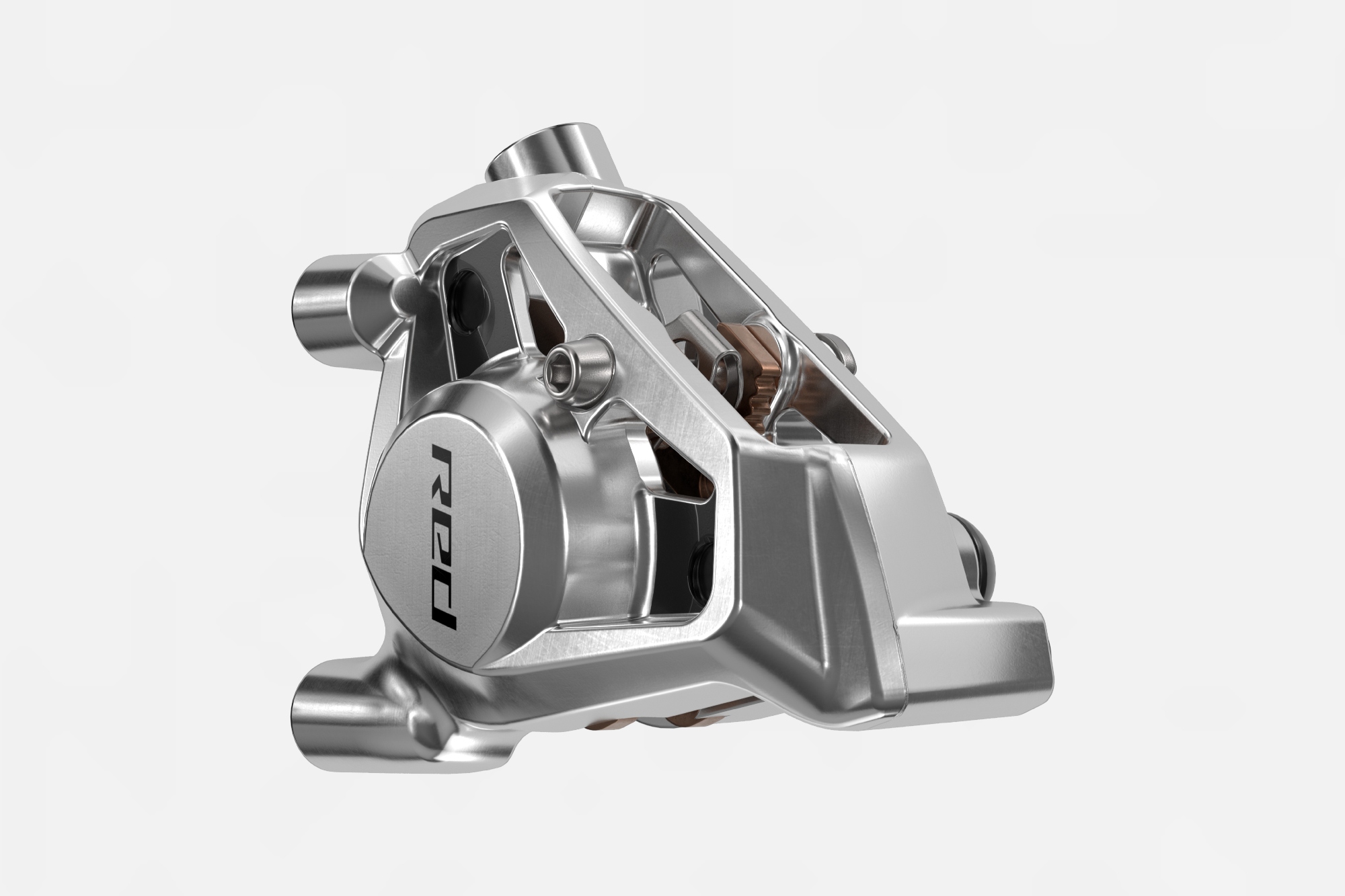
SRAM has also moved the pistons further up in the caliper housing in its newest version of the Red AXS groupset
Derailleurs, front and rear, have undergone modest streamlining. SRAM was often criticised for poor quality front mech shifting on the outgoing Red. To combat this, the distance the mech cage has to cover to complete a shift has now decreased, which is said to to increase shift speed and reliability. It's compatible with a wider range of chainring sizes, working with 46/33, 48/35, 50/37, 52/39, 54/41 and 56/43 setups.
At the rear, things have stayed almost the same except for the mech cage and jockey wheels. The lower part of the rear mech cage is now carbon fiber, which helps save a further 16 grams. The new rear mech covers cassette ranges from 10-28, all the way up to 10-36, with larger jockey wheels decreasing chain articulation for improved efficiency.
What hasn't changed at all, is the motor internals. The same servo motors, both front and rear make a return on the new groupset, which, as I'll come onto, may be a missed opportunity.
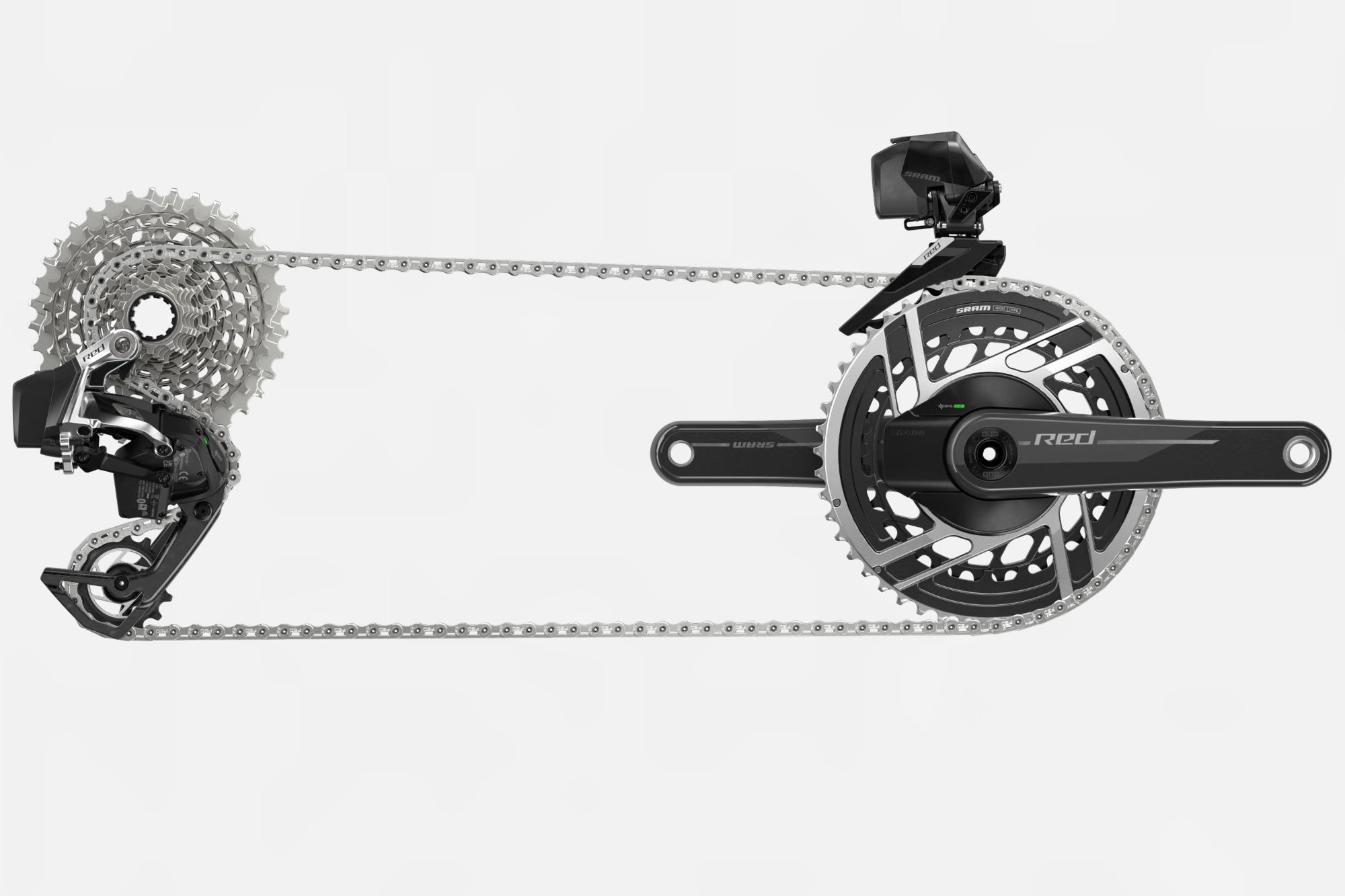
Front and rear derailleurs have undergone modest streamlining
The new SRAM Red AXS chainset might look familiar, but it has once again seen some revisions, which from an engineering standpoint, are impressive. SRAM's Red AXS power meter still operates to the same +/- 1.5% accuracy rating, but has dumped 29 grams over the previous generation thanks to a lighter-weight crank arm. Paul Kantor, product manager at SRAM told me it has long been a goal of the team to produce a 100 gram left hand crank arm - and with the new RED they've done it.
Two-by setups are available off the peg in 50/37T, 48/35T and 46/33T chainring combinations, while the 1x equivalent is available in just 48 and 50t chainring sizes. Crank length options have increased - power and non power cranks are now all available in 160, 165, 167.5, 170, 172.5, and 175mm lengths.
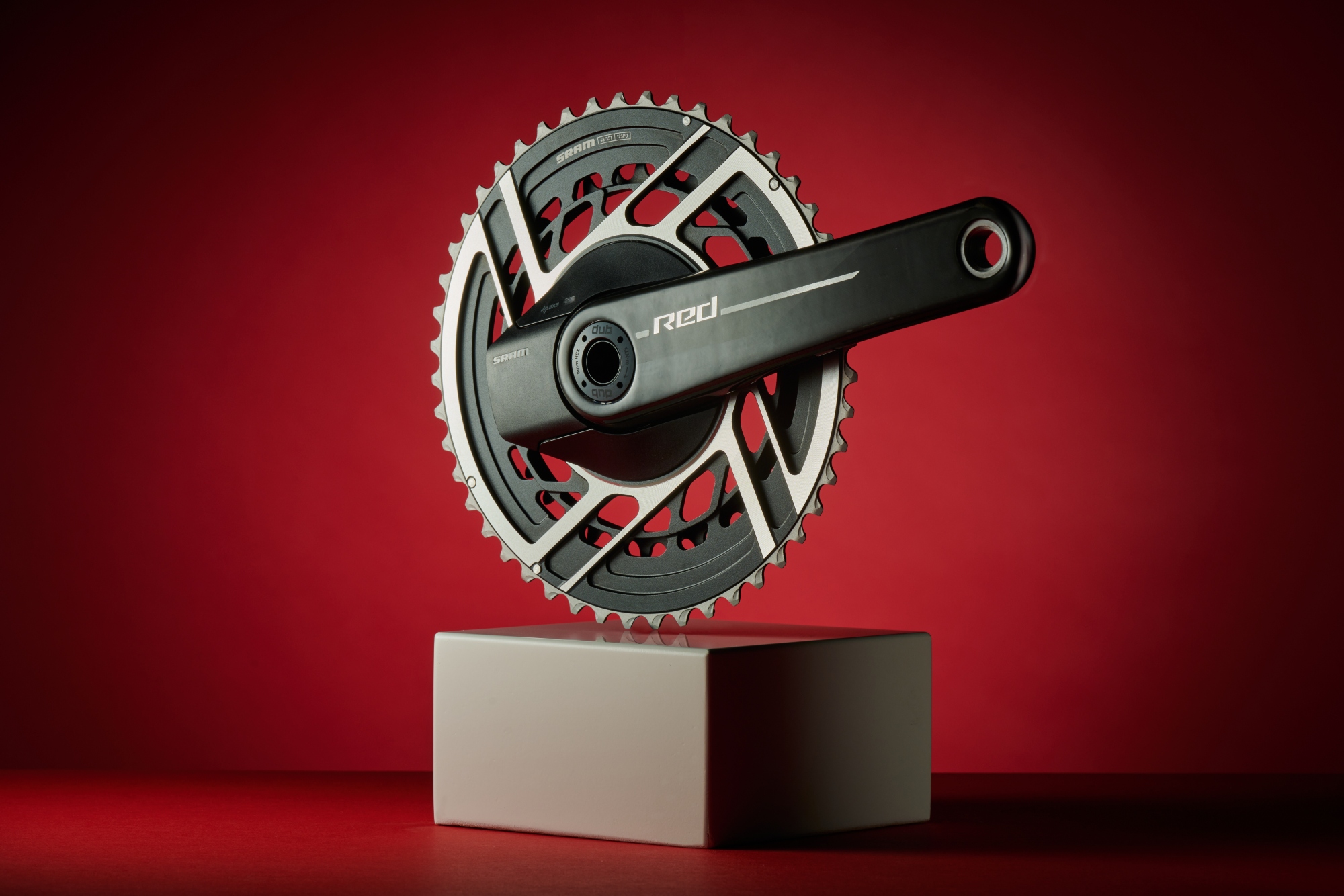
The new SRAM Red AXS chainset looks very similar - but tweaks have been made
Bringing up the rear is a new 10-36 cassette option, which allows the new groupset a huge gear range of almost 500%. Machined from one piece of steel to save weight, the cassette is complimented by a new chain featuring visually-arresting holes that save 13 grams.
And for those of you who like bling, chains and cassettes across the range are available in both silver and rainbow colourways.
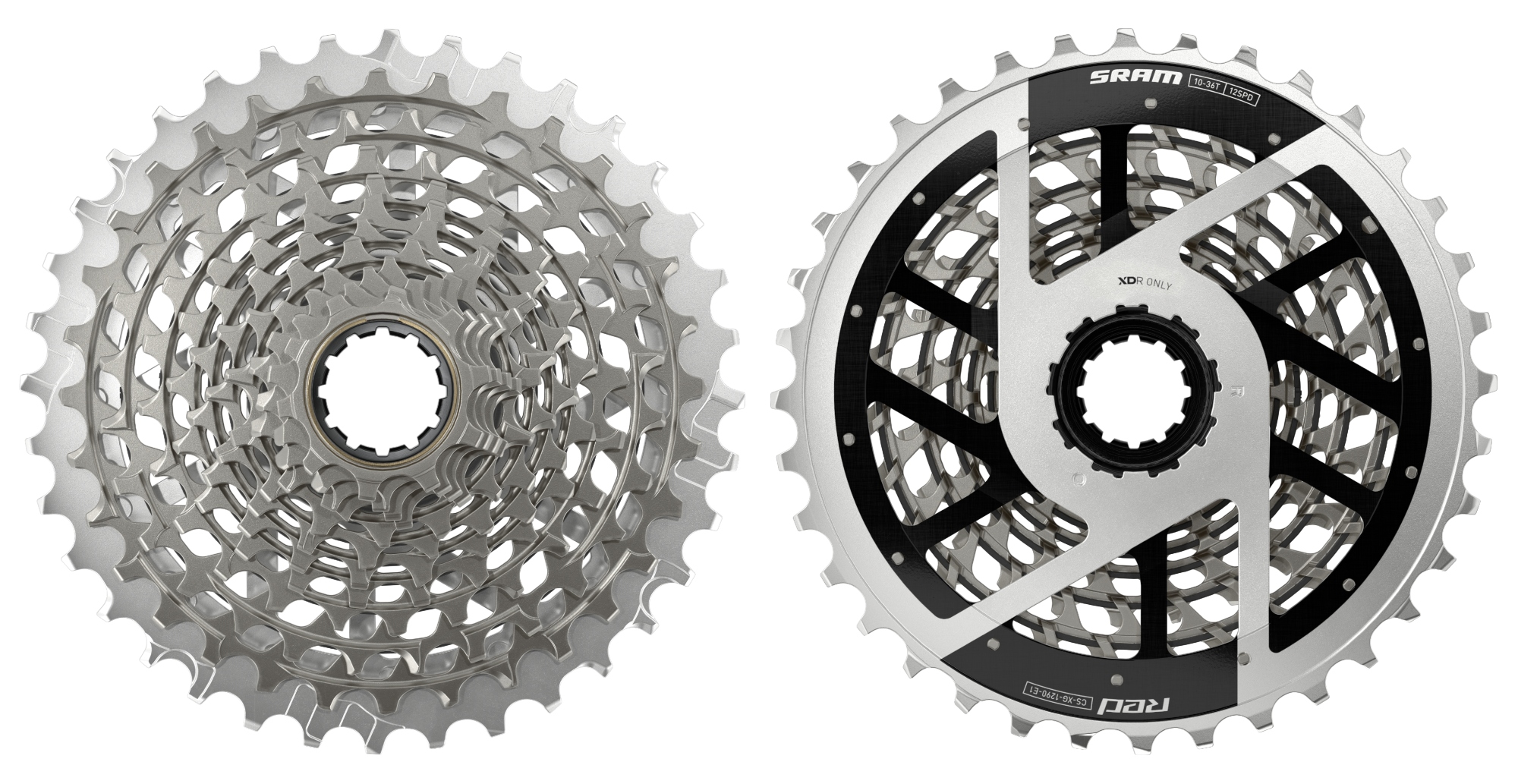
SRAM is offering a 10-36 cassette option
New SRAM Red AXS reviewed
Not only myself, but also North American Editor, Anne-Marije Rook have both had the chance to ride the new SRAM Red AXS. Between us, we've put 1690km on the new groupset, and here's what we reckon...
Anne-Marije Rook - North American editor, 450km
I haven't clocked quite as many miles on the new SRAM Red AXS as Joe has, maybe just around 450 kilometers to date, but that's plenty to dish out my initial thoughts.
As I’ve spent the majority of the past eight years aboard bikes equipped with SRAM’s electronic groupsets, the brand’s eTap shift logic feels as natural to me as the beat of my own heart. As such, any upgrades and changes stand out to me immediately, and when it comes to the new SRAM Red, there’s a lot to get excited about.
Rather than trusting the new groupset into the hands of a mechanic, I went to work myself, installing the groupset on my custom titanium HotSalad all-road bike. I do this so I can get intimately acquainted with the new drivetrain and see what changes were made. The larger rear pulley wheels, chain changes and handy new Red AXS front derailleur setup tool did not go unnoticed. Overall, the installation was quick and precise, requiring little fine-tuning after the initial setup.
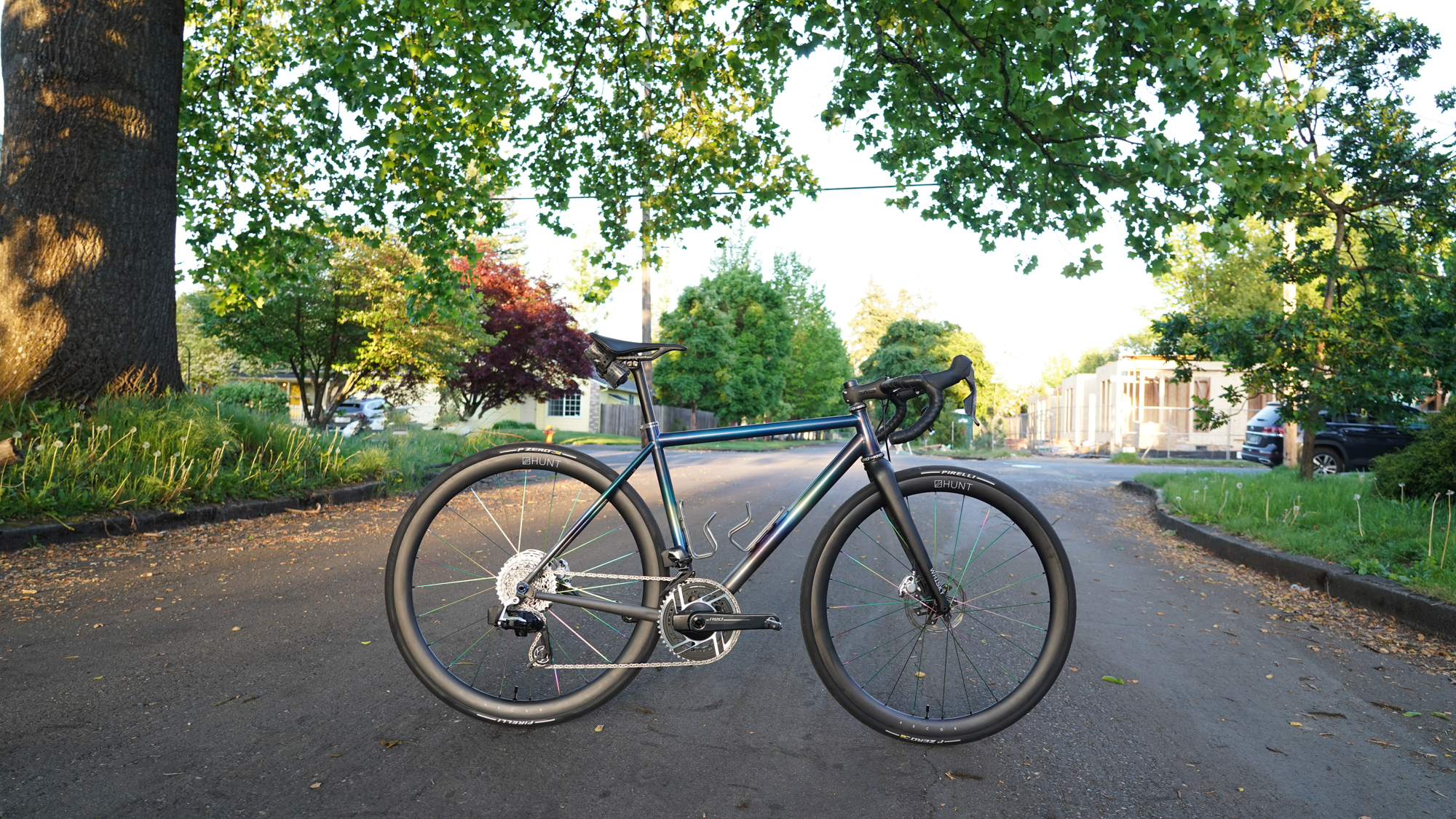
The groupset’s standout change is, of course, its hood and lever shape. Elongated for a more ergonomic feel, the top of the hoods are about half as tall as its predecessors – a most welcomed change – but also significantly longer. The black hood rubber measures about as long as my 90mm stem, which could potentially impact one’s bike fit. The shape now is more akin to Shimano or Campagnolo’s hydraulic brake levers as these brands figured out how to avoid those dreaded towering hood shapes early on. The levers, too, have taken on a new, less clunky shape, which not only allows for better reach and adjust options, it looks better, too.
Between the new hood-lever shape, the change made to the inner workings of the hood and the stiffer caliper, the braking has significantly improved. It’s now noticeably more powerful. Frankly, they’re fantastic.
But perhaps my favorite upgrade to this new gruppo is the bonus buttons! The idea may have been taken from Shimano’s electronic groupsets but SRAM has taken a good idea and made it better. While the buttons are rather small, the location of the inside of the hoods, just above the thumbs, works extremely well. Like the blips, you can opt to use them to lower your manage your dropper post or switch between pages on your cycling computer, but I like them for shifting. I was surprised how quickly I adopted the bonus buttons for shifting instead of the paddles. It feels very natural and works well when you spend a lot of time on top of the hoods rather than in the drops.
Crisp, reliable shifting, a lighter overall componentry weight, powerful braking and a more comfortable riding experience – what’s not to like? Of course ,with its familiar SRAM feel and shift logic, Shimano loyalists may not be swayed but SRAM Red AXS is a stellar upgrade to the brand’s current offerings, and one current SRAM users will be excited about.
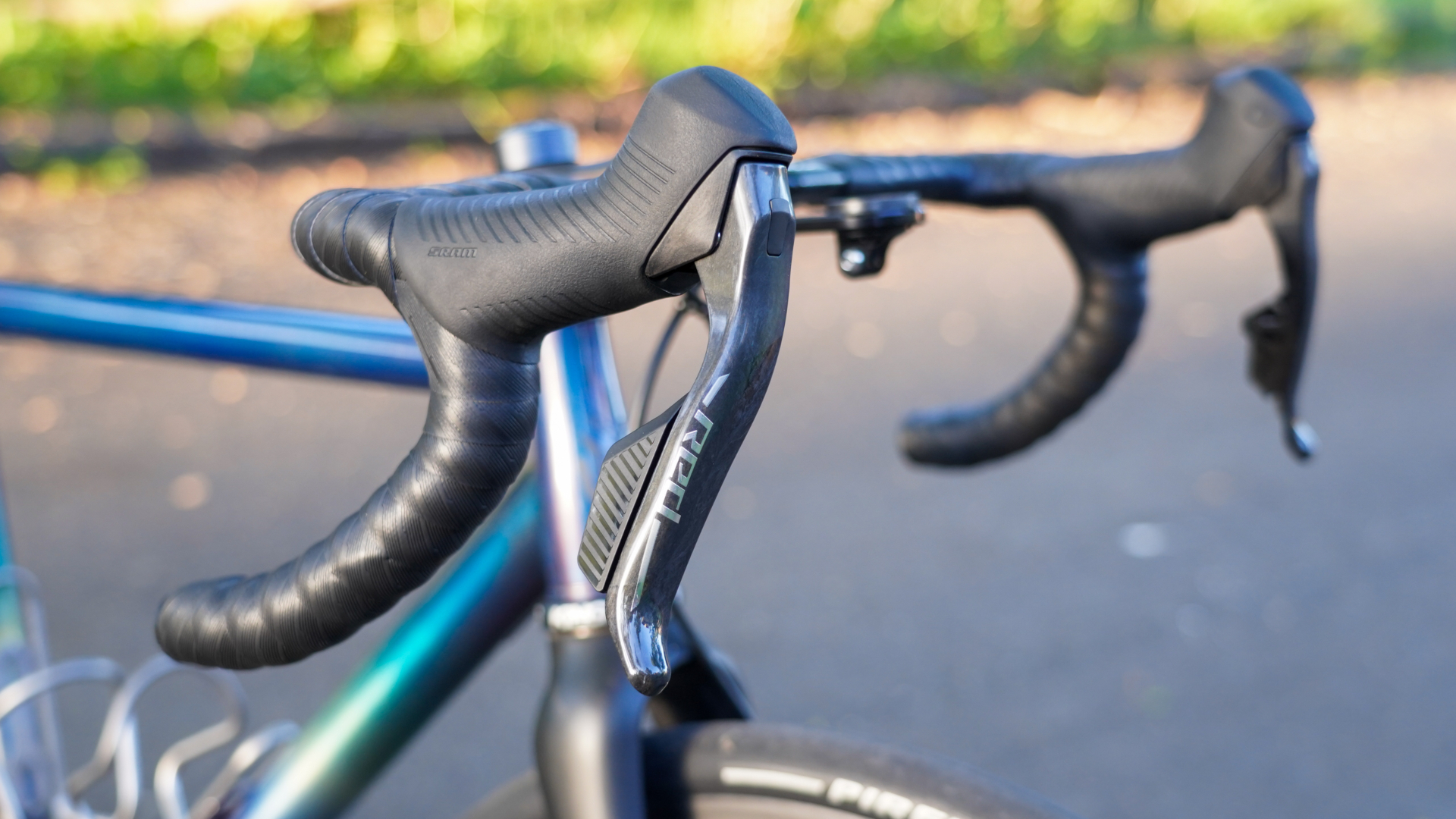
Joe Baker - Tech writer, 1,250km
Back in the UK, I find myself reiterating many of the same praises from across the pond.
From ride one, improved braking performance was instantaneously noticeable. The new brakes have an abundance of modulation and power - a stark contrast over the outgoing Red - something I have been vocal about in the past.
These enhancements make a huge difference to usability and, in my opinion, safety. The ability to apply maximum brake pressure with such little force at the lever end allows you to stay relaxed in the upper body, avoiding the tensing up that so often causes us to crash when the going gets sketchy.
On prolonged descents, the brakes hold up far better than the old Red too. I have experienced zero brake fade with this groupset, even at the press launch where I hooned down a 6km technical Italian descent.
Onto shift quality now and this is where I just felt like SRAM might have missed a trick.

The good news, is the shifting reliability. Much to the dismay of the SRAM engineers on the launch event, I shifted repeatedly up and down the rear cassette, under a constant 600-watt load up a steep climb, and the rear mech did not miss a beat. I haven’t dropped a chain over the test period, but I have experienced a few momentary delays in shifting onto the big chainring. This only occurred at the top of climbs, at more extreme chain angles.
SRAM does have a systemic issue with shift speed. Because there isn’t a designated shifter for the front derailleur, the system has a shift delay of around 50-70ms before committing to either a front or rear derailleur shift. Small, but noticeable. Engineers told me they had decreased this time delay, and it's worth noting too that with the use of a satellite shifter, you could theoretically program the groupset to have independent shifters for each mech - but that isn't how its sold.
So, it’s a combination of giant technological leaps, and small tentative steps, all in the right direction - but is it enough? Well, I think so. The braking performance is now genuinely best in class, which is truly impressive, and shift quality is slightly better than the outgoing Red. Yet it’s not quite market-leading. SRAM has certainly raised the bar with the new Red AXS, but in my mind, it's not quite on equal footing with Shimano’s superb Dura-Ace.
Price and weights
As far as price is concerned, it will come as no surprise that the latest and greatest groupset from SRAM comes at a fair old premium - £4248 to be exact. That's for a two by build complete with a power meter too. It does slightly undercut Shimano (by around £50/$50, but when you consider most will by the groupset already equipped on a bike, it's not likely going to affect bike prices all too much between the brands.
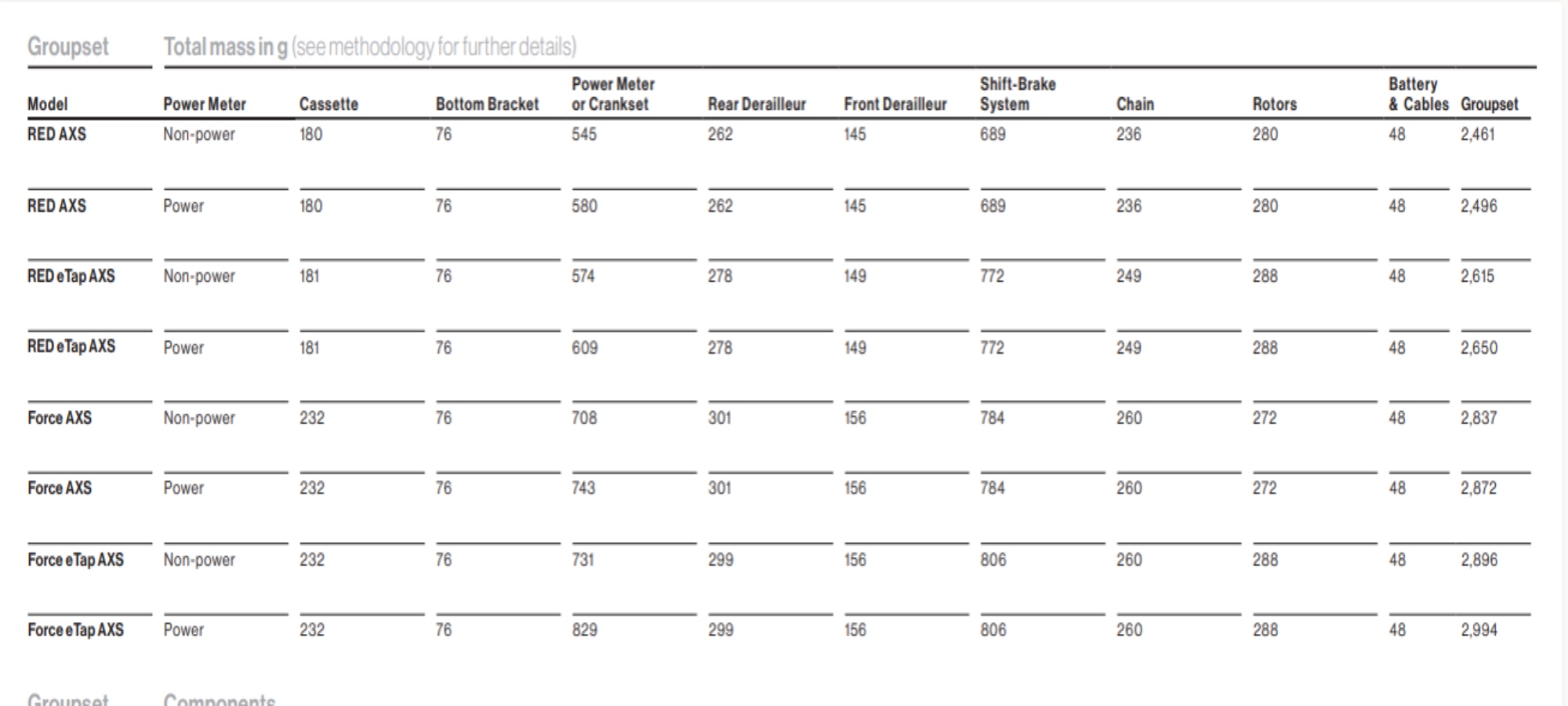
The weights above, were provided by SRAM, however have been verified by Cycling Weekly on our own scales too. The measurements are taken from a groupset with 48/35 chainrings, a 114 link chain, and 172.5mm crank arms.
For more information, visit the SRAM website.

Thank you for reading 20 articles this month* Join now for unlimited access
Enjoy your first month for just £1 / $1 / €1
*Read 5 free articles per month without a subscription

Join now for unlimited access
Try first month for just £1 / $1 / €1
Get The Leadout Newsletter
The latest race content, interviews, features, reviews and expert buying guides, direct to your inbox!

Joe is Cycling Weekly's tech writer. He's always had a love for bikes, since first riding a two wheeled steed before the age of four. Years down the line, Joe began racing at 16, and enjoyed great experiences internationally, racing in Italy, Spain and Belgium to name a few locations. Always interested in tech, Joe even piloted his Frankenstein hill climb bike to a Junior National Title in 2018. After taking a step back from elite level racing in April 2022, Joe joined our team as a freelancer, before becoming Tech Writer in May 2023.
-
 MAAP teams up with QUOC; first collab is the Gran Tourer XC shoe
MAAP teams up with QUOC; first collab is the Gran Tourer XC shoeDesigned for off-road riding the limited-edition shoe features a new colourway and other features
By Luke Friend Published
-
 'I've already lost 2 kilograms and my head feels clearer': I'm a month into sober curiosity and have never felt so good on the bike
'I've already lost 2 kilograms and my head feels clearer': I'm a month into sober curiosity and have never felt so good on the bikeBeginning to fear for his health, Steve Shrubsall swapped beer and telly for turbo sessions and books, here’s what happened
By Stephen Shrubsall Published